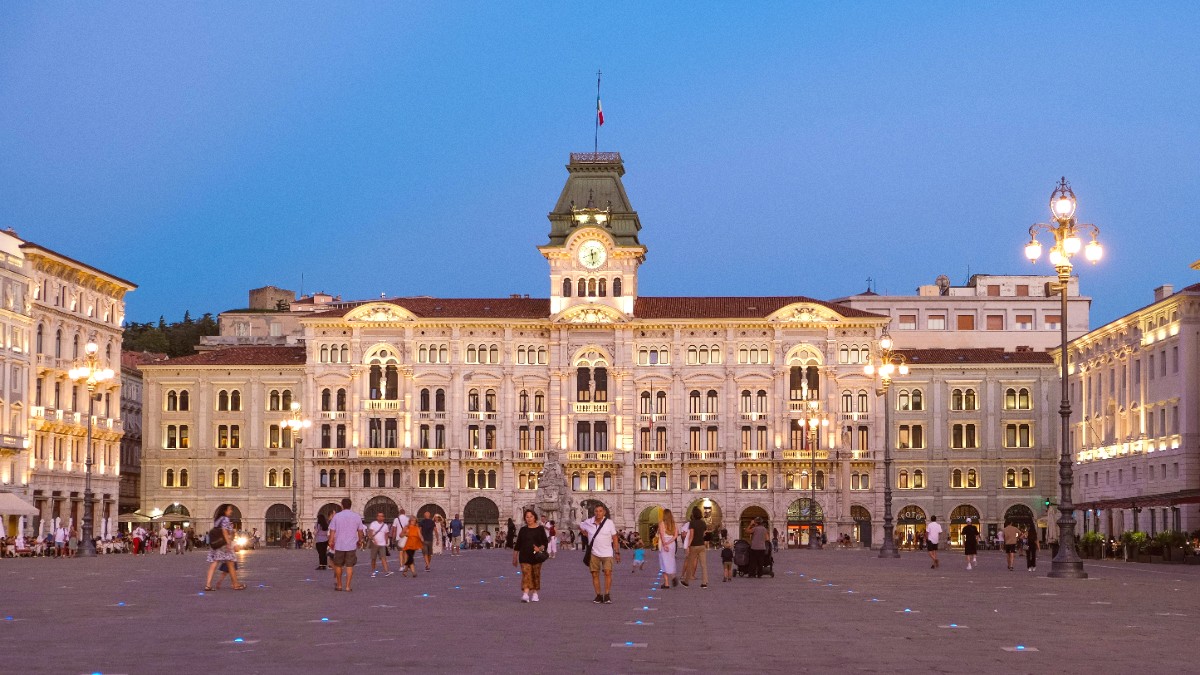
Friuli Venezia Giulia, Italy
Trieste's food tells the story of its multi-ethnic past. It combines traditional Italian ingredients with techniques and dishes from the Austro-Hungarian Empire and neighboring Slovenia.
Prominent ingredients include pork (e.g., Prosciutto di San Daniele), fresh Adriatic fish, sauerkraut (Crauti), horseradish (Kren), and various beans and legumes in hearty soups. Olive oil is used, but butter and lard also feature. The region also produces excellent wines like Friulano.
Trieste's cuisine stands distinct from the broader Friuli Venezia Giulia region, which often emphasizes cured meats and cheeses. Trieste offers a more "Mitteleuropean" character.
The culinary scene in Trieste extends beyond typical Italian pasta and pizza, featuring hearty soups, rich meat stews, and a distinct coffee culture.
Trieste is a global coffee hub. Coffee is not just a drink; it is a ritual and a cornerstone of social life. Learning the local coffee lexicon is recommended.
A hearty, thick soup with sauerkraut, beans, potatoes, and often pork. A Triestine staple, found in traditional Osmize and trattorias.
Essential during cooler months.
A rich beef stew, often served with polenta or potato dumplings (Gnocchi), a legacy of Austrian influence.
Rich and satisfying.
Boiled pork, often pork shoulder or sausage, served with sauerkraut and freshly grated horseradish.
A bold combination.
A traditional Triestine sweet bread roll, shaped like a snail, filled with nuts, dried fruit, chocolate, and rum.
A sweet bread, often made for Easter celebrations.
Trieste offers elegant establishments for a refined culinary experience.
Numerous trattorias and osterias provide a balance of quality and value.
Affordable eats and local markets for quick meals.
Increasingly available. Most restaurants can adapt pasta dishes. Many pizzerias offer vegetarian options. Look for dedicated restaurants or those marked as "cucina vegetariana/vegana."
Ask for "senza carne/pesce" (without meat/fish) or "senza formaggio" (without cheese).
Awareness is growing. Many restaurants offer gluten-free pasta or pizza; ask for "senza glutine." Menus legally require common allergen indications.
Learning "Sono allergico a..." (I am allergic to...) is helpful.
Learn Triestine and Friulian cuisine.
Explore Trieste's profound coffee heritage.
Explore Collio and Carso wine regions.
Temporary farm-to-table eateries, a local experience.
Enjoy Presnitz and Pinza during Christmas/New Year.
Look for Frittelle and Chiacchiere during Carnival.
Roasted chestnuts are sold by street vendors in autumn.
Attend "Autunno in Tavola" food and wine events.
Booking ahead is recommended for popular restaurants, especially on weekends or during peak season.
Consider a food tour to explore Trieste's coffee culture, traditional buffets, and local markets.
Discover Trieste's coffee culture, traditional buffets, and local markets through organized food tours.
Explore Food ToursThe nearby Collio and Carso wine regions in Friuli Venezia Giulia offer winery tours and tastings.
Unique to the Karst region, these temporary farm-to-table eateries sell local produce directly from farmers.
These unique Triestine establishments offer a casual dining experience with quick, hearty local dishes, notably boiled meats.
A glimpse into local daily life.
Beyond just farm visits, Osmize are pop-up eateries where farmers sell their own cured meats, cheeses, and wines directly, providing an authentic rural taste.
Temporary, check local signs (Frasca) for availability.
Mastering the local coffee lexicon (e.g., "Nero", "Capo") makes ordering a breeze.
Be aware of the common "coperto" (cover charge) and "servizio" (service charge) on bills.
Venture into neighborhoods like San Giacomo for a more local dining feel.
Trieste's culinary scene is a unique blend of cultures. Embracing local traditions like Aperitivo or visiting an Osmiza deepens your experience.